Warren Distinguished Lecture Series

The Warren Distinguished Lecture Series is made possible by a generous, renewing gift by Alice Warren Gaarden in 1961. Since 1989, we have been bringing in accomplished researchers and speakers from around the world to share their work with students, faculty, and friends of CEGE. Please join us for these lectures!
- Join us in person in the George J. Schroepfer Conference Theater, 210 Civil Engineering Building, Fridays at 10:10 a.m., unless otherwise noted. Coffee and refreshments served.
- Join us via Zoom. Registration is required. Link information will be sent when you register.
- Recordings are available on the CEGE YouTube channel, Warren Lecture Series playlist , where you can also search past lectures.
Upcoming Events
We wrap up the spring season on April 26 with the Robert Dexter Lecture with Dimitrios Lignos, Resilient Steel Structures Laboratory, École Polytechnique Fédérale de Lausanne (EPFL), Lausanne (Switzerland). The series will resume after a summer break.
There are no upcoming events matching your criteria.
Past Warren Lectures
Understanding and Modeling Hydrologic Cycles – From New Theories to New Models of Water and Energy Fluxes
Friday, April 20, 2018, 10:10 a.m. through Friday, April 20, 2018, 11:15 a.m.
George J. Schroepfer Conference Theater, 210 Civil Engineering Building

Jingfeng Wang
Civil and Environmental Engineering, Georgia Institute of Technology
ABSTRACT: Seeking more fundamental principles underlying the hydrological cycles beyond the conservation laws opens new opportunities for developing innovative hydrologic models. Based on the argument that thermodynamic equilibriums tend to be reached as quickly as possible, the hypothesis of maximum evapotranspiration (ET) was proposed and confirmed by field observations with testable predictions justifying the formulation of ET as a function of surface variables. Translation of this new physical theory into predictive power of water and energy fluxes is made possible by the application of the theory of maximum entropy production (MEP) as a physical principle and a statistical inference algorithm. The formulation of the MEP model of ET and heat fluxes builds on the Bayesian probability theory (as an inference algorithm to translate physical constraints into prediction of physical variables), information theory and boundary-layer turbulence theory. The MEP model has several unique advantages including simultaneous solution of all heat fluxes, closure of surface energy balance at all space and time scales, independent of temperature and moisture gradients, wind speed and surface roughness lengths, covering the entire range of soil moisture, and reduced sensitivities to those of model inputs and parameters without using empirical tuning parameters. The MEP model has been used as a new remote sensing algorithm of surface water-energy fluxes and an innovative physical parameterization of surface hydrology in coupled land-atmosphere-ocean models.
Is Climate Change a Science Problem or an Engineering Problem?
Friday, April 13, 2018, 10:10 a.m. through Friday, April 13, 2018, 11:15 a.m.
George J. Schroepfer Conference Theater, 210 Civil Engineering Building
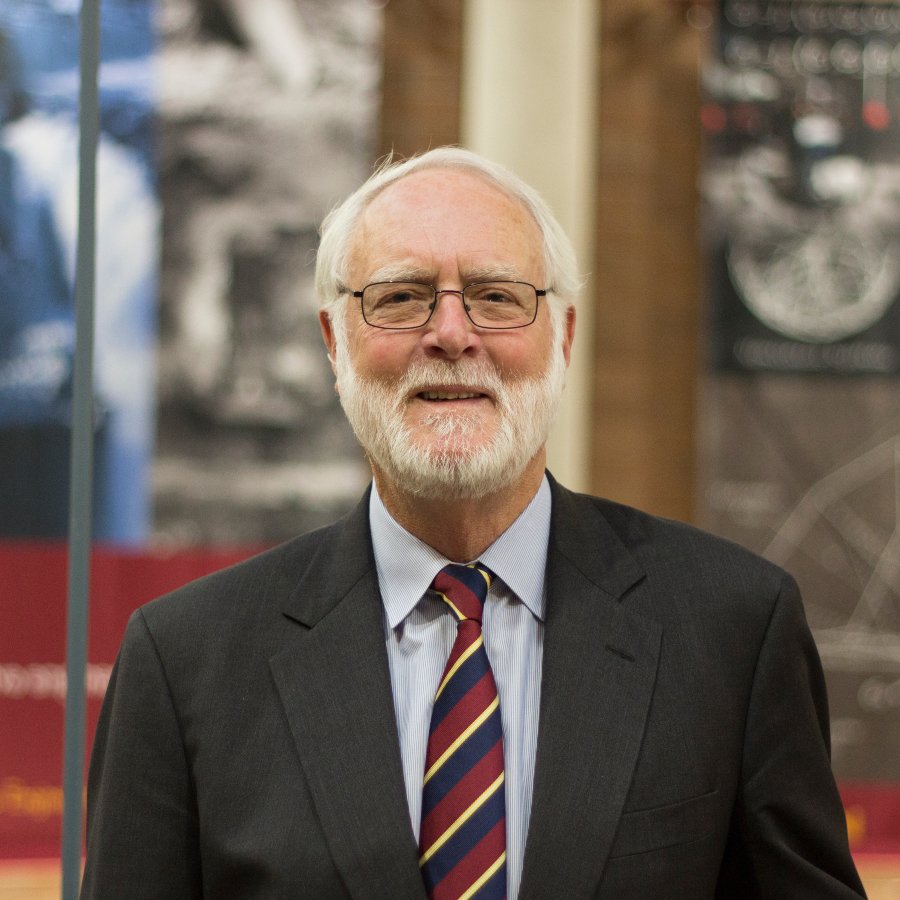
G. Wayne Clough
Secretary Emeritus of the Smithsonian Institution and President Emeritus of the Georgia Institute of Technology
ABSTRACT: In the shadow of the Great Depression, a group of courageous engineers built Hoover Dam, the Golden Gate Bridge, the New York City water tunnels, and skyscrapers. They created the technology they needed to solve problems others had never imagined. We need this kind of engineering leadership today to take on a new kind of problem: climate change. The solutions we need require not only technical skills, but an appreciation of the scientific complexities of the human and natural dimensions that come with it. Today’s issues call for practical, adaptable, small- and large-scale solutions. Engineering needs to step up to the challenge.
Dynamics of Drilling
Friday, April 6, 2018, 10:10 a.m. through Friday, April 6, 2018, 11:15 a.m.
George J. Schroepfer Conference Theater, 210 Civil Engineering Building
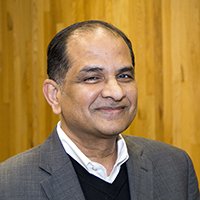
Balakumar Balachandran
Mechanical Engineering, University of Maryland
ABSTRACT: From a mechanics standpoint, drilling for petro-chemicals is an inherently complex process. Models of this process are nonlinear in nature. For instance, sources of nonlinearities that can cause undesirable and harmful vibrations in drill-strings include contact between the drill string and bore hole, coupling between axial, torsional, and lateral motions, as well as those associated with the drag-bit cutting mechanics. The cutting action is a source of delay effects much like in a metal cutting operation such as milling. Balachandran discusses a combination, of analytical, numerical, and experimental results obtained on drill-string dynamics will be presented and the observed phenomena including forward and backward whirling motions and stick-slip dynamics.
When Microbiology Meets Electrochemistry, Energy-guzzling Treatment Becomes History
Friday, March 30, 2018, 10:10 a.m. through Friday, March 30, 2018, 11:15 a.m.
George J. Schroepfer Conference Theater, 210 Civil Engineering Building

Zhiyong (Jason) Ren
Environmental Engineering, University of Colorado Boulder
ABSTRACT: Environmental engineers are expanding their roles from pollution clean-up to sustainable resource recovery and valorization. Microbial electrochemistry plays an important role in this transition, as it provides a flexible platform for both oxidation and reduction oriented processes, and it tightly relates to research in microbiology, biochemistry, material science, and engineering. Ren highlights recent works by his research group using this integrated approach for energy and environmental applications, including energy and chemical production, carbon capture and utilization, wastewater treatment, water desalination, and soil remediation.
Structured Modeling in Large-Scale Dynamic Transportation System Optimization: Microscopic State-Space-Time Network and Macroscopic Computational Graph Based Framework
Friday, March 23, 2018, 10:10 a.m. through Friday, March 23, 2018, 11:15 a.m.
George J. Schroepfer Conference Theater, 210 Civil Engineering Building
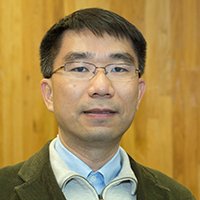
Xuesong Zhou
Ira A. Fulton Schools of Engineering, Arizona State University
ABSTRACT: Zhou presents two new modeling frameworks, a microscopic state-space-time (SST) network and a macroscopic computational graph (CG), for two major applications: to optimize vehicular routing decisions with pickup and delivery time windows (VRPPDTW), and to fully incorporate multiple data sources, including loop detector counts, and GPS location samples, for jointly estimating traffic congestion dynamics and driving behavior parameters. These two modeling frameworks enable us to prebuild many complex state transition constraints and relationships into a well-structured hyper network, so that the resulting optimization model can be nicely reformulated as multi-commodity network flow models with a very limited number of side constraints. The resulting relaxed problems can be solved by computationally efficient dynamic programming algorithms within a Lagrangian decomposition or a backpropagation based nonlinear optimization framework.
Research Integrity: Managing Your Copyrights and Data
Friday, March 9, 2018, 10:10 a.m. through Friday, March 9, 2018, 11:15 a.m.
George J. Schroepfer Conference Theater, 210 Civil Engineering Building

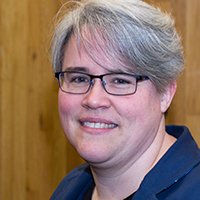
Nancy Sims and Allison Langham
University Libraries, University of Minnesota
ABSTRACT: The theme of Research Ethics Week 2018 (March 5-9) at University of Minnesota is "Research Integrity and Trustworthy Science: Challenges and Solutions." Management of research data is essential to research integrity. In the first part of this seminar, Copyright Program Librarian Nancy Sims covers a number of copyright issues related to publishing and distribution of scholarship, including specifically addressing the issues related to using previously published works in a dissertation/thesis. Then, Scholarly Communications and Engineering Liaison Librarian Allison Langham addresses the ethics of data management and provide information on best practices.
Challenges in Computational Mechanics: Isogeometric Trimmed Shells, Imaging-driven Microstructure Upscaling and Variational Multiscale Modeling
Friday, March 2, 2018, 10:10 a.m. through Friday, March 2, 2018, 11:15 a.m.
George J. Schroepfer Conference Theater, 210 Civil Engineering Building
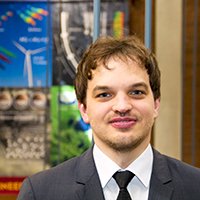
Dominik Schillinger
Civil, Environmental, and Geo- Engineering, University of Minnesota
ABSTRACT: This seminar revolves around three problems from different areas of computational mechanics, illustrating the broad spectrum of research that is currently underway in Schillinger's research group. Schillinger first talks about the current disconnect between computer-aided geometric design (CAD) and finite element analysis in today’s design-through-analysis workflows. In the second part, he explains how the anisotropic and heterogeneous properties of plant materials are related to microstructure composition at different length scales. In the third part, he talks about a new interpretation of discontinuous Galerkin methods through the lens of variational multiscale analysis, arguing that the resulting coarse-scale formulation represents a general unifying framework for deriving specific variants of discontinuous Galerkin methods. Schillinger closes by outlining potential engineering applications.
Calibrating the Strength Ratio and the Failure Envelope for DEM Modeling of Quasi-Brittle Materials
Friday, Feb. 23, 2018, 10:10 a.m. through Friday, Feb. 23, 2018, 11:15 a.m.
George J. Schroepfer Conference Theater, 210 Civil Engineering Building

Haiying Huang
Civil and Environmental Engineering, Georgia Institute of Technology
CSE Distinguished Scientists and Engineers from Underrepresented Groups Speakers Program, 2018-19
ABSTRACT: A common issue in numerical modeling with the distinct element method (DEM) based on spherical particles is that the largest compressive-tensile strength ratio (UCS/UTS) is only about 3-5, if the interactions between the particles are limited to short-range, elasto-perfectly brittle and frictional. The associated failure envelope generally fails to capture the high nonlinearity in the low confining stress range, typical for quasi-brittle materials such as rocks and concretes. This deficiency may not be an issue for a DEM simulation if the macro-scale failure involved in the problem of interest is in a single mode, namely, either solely shear failure governed plastic flow or tensile fracturing. However, rock failure in general could involve both plastic flow and tensile fracturing. The strength ratio, which can be viewed as a measure of material brittleness, then affects the transition from one mode of failure to the other. Huang shows that a realistic strength ratio and the associated nonlinear failure envelope at low confinement can, in fact, be achieved by implementing a displacement-softening contact law within the conventional framework of soft particle DEM.
Brittle Failure of Rock: A Review and General Linear Criterion
Friday, Feb. 16, 2018, 10:10 a.m. through Friday, Feb. 16, 2018, 11:15 a.m.
George J. Schroepfer Conference Theater, 210 Civil Engineering Building
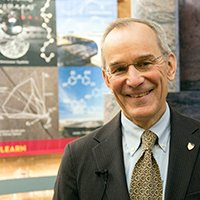
Joseph Labuz
Civil, Environmental, and Geo- Engineering, University of Minnesota
ABSTRACT: A successful failure criterion is a generalization of experimental data obtained from strength tests. For isotropic rock that exhibits a pressure dependence on strength, the simplest failure criterion is a linear equation in major and minor principal stresses. A general linear failure criterion called Paul-Mohr-Coulomb (PMC) includes the intermediate principal stress and provides a framework to describe a nonlinear failure surface by a set of planes “hugging” the curved surface. In this presentation, Labuz explains PMC and illustrates fitting strength data with two planes to form 6- and 12-sided pyramidal failure surfaces.
Deformation Response of Textile Composite Structures: Experiments and Multi-scale Modeling
Friday, Feb. 9, 2018, 10:10 a.m. through Friday, Feb. 9, 2018, 11:15 a.m.
George J. Schroepfer Conference Theater, 210 Civil Engineering Building
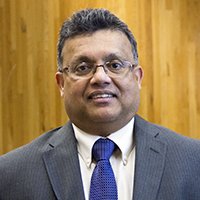
Anthony M. Waas
Aeronautics and Astronautics, University of Washington
ABSTRACT: Several new candidate structural materials are being evaluated for the purpose of weight reduction. Many of these candidates offer possibilities of automated manufacturing, which would also lead to cost reductions. In this talk, Waas uses experimental results as the basis to develop a multi-scale predictive mechanics model of deformation response. Results from two different types of three-dimensional textile composites (3DTC) will be used to illustrate the advantages of the proposed model.